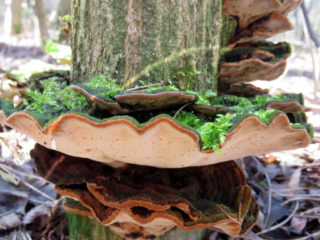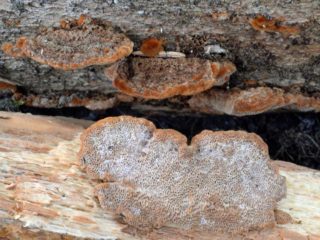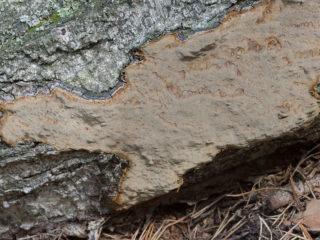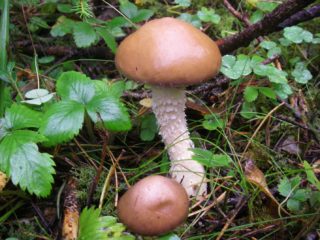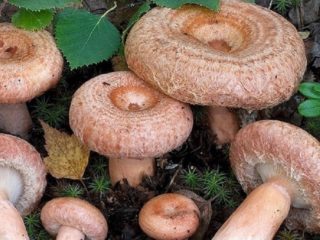Content
Tinder fungus or fellinus black-limited is also known by Latin names:
- Polyporus nigrolimitatus;
- Ochroporus nigrolimitatus;
- Fomes nigrolimitatus;
- Cryptoderma nigrolimitatum;
- Phellopilus nigrolimitatus.
Tubular mushroom from the Basidiomycete department.
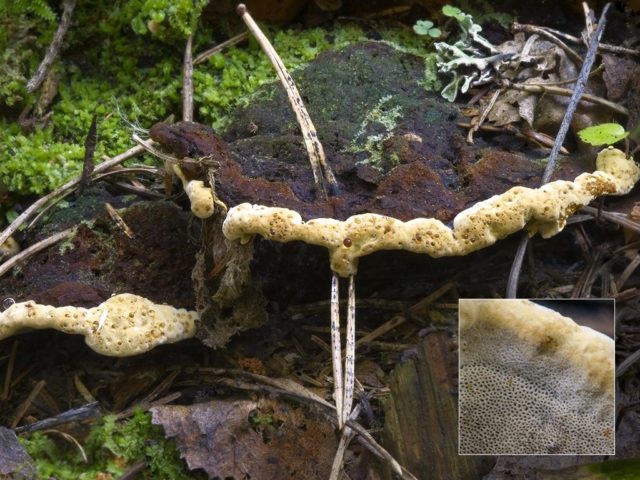
Rounded edges of irregular thickness and irregular shape
What does fellinus black-limited look like?
A fungus with a long biological cycle, a parasite on decaying or processed wood.
External characteristic:
- The cap can be prostrate-bent, rounded cushion-shaped, or narrow, elongated. Follows the curves of the surface of the wood on which it grows. The average thickness of the fruiting body is 10-15 cm, the width is up to 3 cm. A distinctive feature of the species is the presence of a contrasting light wavy ridge along the edge with a porous structure.
- The surface at the beginning of the growing season is light brown or brown, felt with a fine thick pile, soft, even. The structure of young mushrooms is spongy elastic.
- In old fellinuses, the surface changes to a dark chocolate color, shallow grooves of different sizes appear. Fruit bodies become brittle and brittle, the structure of the cork is hard and dry. Moss often appears on the surface. The edges of the cap become sharp, the color is dark ocher.
- The fabric is divided into two layers: the upper one is dense dark brown with a reddish tint, the lower one near the hymenophore is softer, lighter in color. The layers are separated by a black stripe reaching up to 3 cm in width in large specimens.
- The lower spore-bearing part is smooth tubular with small densely spaced pores, uneven. The color in young fellinuses is golden with a brown tint, in mature ones it is brown. The color at the edge of the cap is lighter than at the base.
Spores are cylindrical with thin walls, light yellow in color.
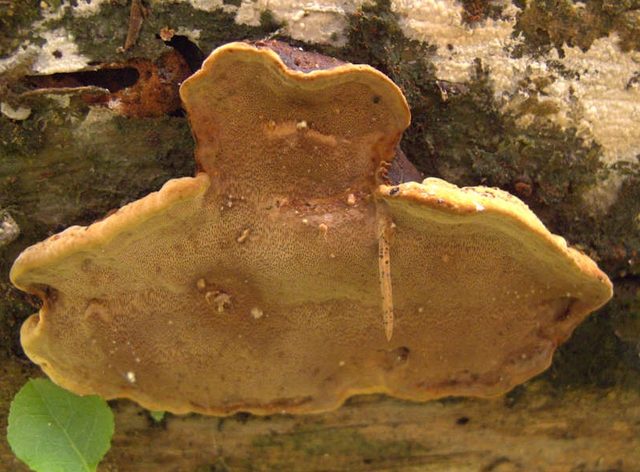
Each specimen is unique in its own way, mushrooms with the same shapes are not found
Where the black-bordered fellinus grows
A rare fungus grows on old stumps and decaying dead wood. It can be found only on conifers, preference is given to spruce or fir, it rarely settles on pine. The main location is on the bottom of the trunks covered with a moss cushion. It can also grow on treated wood, causing variegated rot. Prefers reserved taiga hard-to-reach forests. In Russia, it is found in the Far East, in the mountainous regions of the Urals and Siberia, less often in the Caucasus.
Is it possible to eat fellinus black-limited
The species does not represent nutritional value, the fruit bodies are porous, tough, tasteless and odorless. Black-bounded tinder fungus is an inedible species.
Conclusion
Fellinus black-limited is a tubular species with a long-term biological cycle. It grows on decaying and processed coniferous wood. The structure is dry and tough, does not represent nutritional value.

